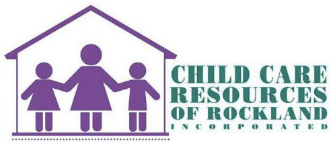Mindfulness practice has been around for decades, but has grown increasingly popular in the past few years. Now with the stress brought on by the pandemic, this practice has become even more widespread. But what is mindfulness? What does it truly mean and how can we incorporate it into the everyday lives of infants and toddlers?
Mindfulness is defined as “the quality or state of being mindful, a state of awareness, the practice of maintaining a nonjudgmental state of heightened or complete awareness of one's thoughts, emotions, or experiences on a moment-to-moment basis (Merriam-Webster).” In other words, it is the practice of living in the present moment, the process of bringing attention to what is happening in the here and now by being in tune to your thoughts, feelings, and emotions in a nonjudgmental manner.
Mindfulness has been shown to offer young children relief from stress and anxiety and can decrease the effects of traumatic events. It can help shift the focus from worrying about the past or future to being present in the moment. Engaging in mindfulness activities has been shown to be effective for young children due to the way the young brain develops.
Throughout our lives our brains are constantly developing; there are connections created in the prefrontal circuits which develop at the fastest rate during childhood. Mindfulness promotes skills that are composed in the prefrontal cortex such as cognitive control and focus. This can have a particular impact on the development of skills such as judgment, patience, and self-regulation during childhood (New York Times).
Parents and caregivers alike can incorporate mindfulness activities or techniques into a young child’s daily schedules. A great mindfulness technique to use with infants is practicing mindfulness infant massages. Infants cannot articulate their feelings other than crying and using nonverbal cues. Infants as young as six to eight weeks can recognize voices and scents of their parents (Karen Gill, M.D.). Over time they can recognize the same of their caregiver. Using gentle pressure to massage the infants head, arms, face, feet, and shoulders can be extremely calming and enhance the bond created between infant/parent and infant/caregiver. This can lead to better sleep/relaxation, control stress, and reduce crying. Being fully attentive during this interaction will allow you to fully tune in to the infant’s mood, physical state, nonverbal cues, and subtle clues to get a sense of how the he is feeling.
Add mindfulness activities into daily schedules by adding mindful minutes into the day. As toddlers are vocal, it is important to check in with them, to ask how they are feeling. A great check-in process with a toddler is conducting a body scan. Focus on one area at a time noting the child’s feelings along the way. Start by asking the child how a particular body part feels, such as her head, hands, feet, or arms. You can help toddlers to share how they are feeling by providing some of the language. Encourage the child to think from head to toe to facilitate body/mind awareness. This practice should help the child in the future to refer to the body scan and talk about each area. You can also incorporate ways to relax such as deep breathing, tensing then relaxing muscles, receiving a hug, or stretching.
For more information on mindfulness or mindfulness activities please contact Jenny: Jennys@rocklandchildcare.org 845-425-0009 x419
Resources:
“Mindfulness.” Merriam-Webster.com Dictionary, Merriam-Webster; accessed June 17, 2020
Gelles, David. “Mindfulness for Children.” The New York Times, Oct. 25, 2017
Gehl, Maria. “Mindfulness for Early Childhood Professionals.” Zero to Three
Marcin, Ashely. Gills M.D., Karen. “Teaching Your Child Mindfulness.” Healthline Parenthood, Jan. 28, 2020



